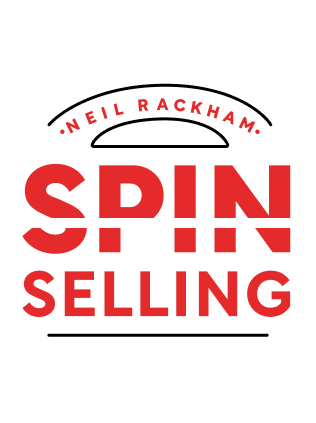

This article is an excerpt from the Shortform summary of "Spin Selling" by Neil Rackham. Shortform has the world's best summaries of books you should be reading.
Like this article? Sign up for a free trial here .
What is a commitment in sales? Do you need to get a commitment in order to close the deal?
A commitment in sales is a part of the process before an official close. A commitment in sales means the customer believes that they need the product, and is willing to take the next steps. See how it works with SPIN selling.
Getting a Commitment in Sales: The Four Stages of a Sales Call
Despite the different customer psychology and sales skills required, all sales calls have basic similarities regardless of the dollar value. Knowing them can help you get a commitment in sales. Here are the four typical stages and how they apply to major sales:
1) Warming up/Opening: The opening is how you introduce yourself, establish connection, and start the conversation. Sales training often teaches that the customer’s impression in the first few minutes of the call is critical to the sale. The opening may have a bearing in a brief one-call interaction, but in large, protracted sales, your opening is less important than what you do in the next stage: the investigating stage.
2) Investigating: In this stage, you ask questions to get information. You’re trying to discover needs or to better understand the customer. Ability to ask investigating or probing questions is arguably the most important sales skill, particularly in major sales. Improving investigating skills can increase large-account sales by as much as 20%.
3) Demonstrating capability/value: Once you understand the customer’s needs, the next step is to show how your product or service can help. In larger sales, where you’re often selling a broader solution, you need to show how your solution solves the customer’s specific problems in a way that makes it worth the cost.
4) Getting commitment: To be a success, a sales call must end with a customer commitment.
In small sales, the customer usually commits to buying the product, while in large sales, she may agree to another meeting, or to provide access to a decision-maker. Such intermediate steps are called advances because they advance the sale by moving the customer toward a decision.
Size of the Customer’s Commitment
Small sales: In a small sale, since the customer isn’t spending a lot of money, the rep doesn’t need to strongly emphasize the value of the product to the customer to get him to buy.
Major sales: Making a large buy is a bigger decision for the customer. The sales rep must heighten the perceived value in the product or service. In fact, increasing the perceived value is a critical selling skill in larger sales.
Getting a Commitment in Sales
Beyond setting action-oriented objectives, you need to work on getting a commitment in sales from the customer.
Researchers found that successful sales reps use several ways of getting commitment:
1) They focus on investigating and demonstrating value, the second and third stages of a sales call. They take more time investigating—discovering and developing customer needs— than less successful reps do. You have to fully understand the customer’s needs in order to build on them and show that you have the right solution. The rep’s investigating questions help the customer feel a pressing need to purchase the solution—and when the customer wants to buy, there’s no need for closing techniques.
2) They check for unanswered questions and concerns. In large sales, the problems or needs and the solution can be complicated. Customers may have questions or need clarification. The reps most successful in getting a commitment ask customers whether there’s anything else they need to address, and then answer the questions.
Sales training sometimes teaches reps to push for getting a commitment in salse despite possible questions or doubts because doing so will surface any remaining questions. However, the concerns customers cite in reaction to a closing technique tend to be hostile—for instance, “I still don’t understand how the lease agreement works; are you trying to hide something by making it so complicated?” When the seller takes the initiative to check for questions, customers respond with simple queries rather than challenges.
3) They summarize the benefits. Calls involving major sales can cover a lot of ground and take considerable time. By the end, the customer will have lost track of key points. So it makes sense to summarize the key points before a decision. In a small sale, a summary probably isn’t needed, but in a major sale, it helps to drive home the benefits and urgency.
4) They propose, rather than ask for, a commitment. Most reps are taught to explicitly ask for an order in the final stage of a call. But instead of asking, the most successful reps tell: they propose or suggest a next step. The proposed action meets two key criteria: it advances the sale, and it’s the most advanced step that’s reasonable for the customer. For instance, a rep might say, “Since we’ve discussed how the new system fixes your speed and reliability problems, may I suggest the next logical step would be a demonstration for your department?”
Getting the Right Commitment
Getting a commitment in sales is important, but you need to make sure you get the right commitment. As part of the call planning process for a major sale, the seller needs to set objectives for the call. Objectives may include intangibles like relationship building, but also must specify what level of commitment the customer must make for the call to be a success.
In a small sale, success is easy to define—it’s a customer order. But in a major sale, fewer than 10% of calls result in an order. Your ultimate goal is a sale at some point down the road; in the short term, you’re looking for an indication of progress in each call, which can be tricky to define.
Just meeting vague objectives isn’t a sufficient standard for success. Further, it’s easy to rationalize that you’ve met your objectives—for instance, if you leave feeling good about the meeting, you may count it as a successful closing.
Sales reps need a clear understanding of what constitutes successful and unsuccessful calls, so they can set objectives leading to success. Here are the typical measures of call outcomes:
- Orders: (successful) the customer makes a firm commitment, usually by signing an order form or contract. As noted previously, fewer calls result in orders in larger sales.
- Advances: (successful) the customer commits to an action that moves the sale process toward an eventual commitment—for example, he may agree to test the product, attend a demonstration, or provide access to a higher-level company official. In larger sales, your closing objective is usually to get an advance. This requires knowing ahead of time what advance you want from the call.
- Continuations: (unsuccessful) you get neither a yes or no. The customer says something positive. but doesn’t agree to take any action—for example, he might invite the rep to keep in touch or to stop in again at some unspecified point in the future. Calls that end this way can’t be deemed successes—success requires action.
- Refusals: (unsuccessful) the customer refuses a commitment—for instance, by explicitly saying “no” to the sale, refusing another meeting, or denying access to additional people in the company.
Research shows that when reps are clear about successful and unsuccessful outcomes, they have greater success in converting continuations to advances.
Objectives should focus on getting the customer to take a specific action—for instance, to attend a product demonstration. In contrast, a less specific objective to gather information or build a relationship leads to an indefinite continuation of the sales process rather than to an advance.
A commitment in sales takes time and patience. You can achieve a commitment in sales by practicing the SPIN strategy.

———End of Preview———
Like what you just read? Read the rest of the world's best summary of Neil Rackham's "Spin Selling" at Shortform .
Here's what you'll find in our full Spin Selling summary :
- What the SPIN in SPIN Selling stands for
- How to demonstrate real value to the person you're selling to
- How to get commitment from your customer to close the sale fast






